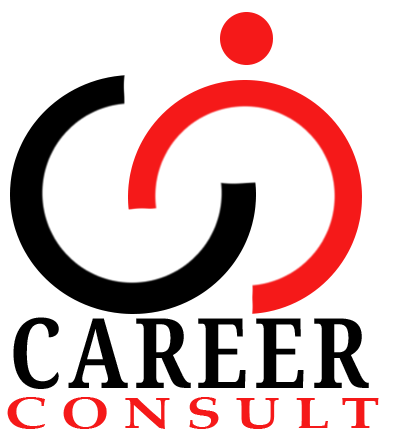10 Mindset Habits to Stay Calm and Clear During Your Job Search
How to quiet the internal noise, build resilience, and protect your energy while job hunting
Job searching is emotionally exhausting but it doesn’t have to drain your clarity or confidence. These 10 mindful practices help jobseekers manage stress, self-doubt, and overwhelm with intention.
The job search journey is one of the most emotionally demanding experiences in a professional’s life. From writing the perfect Professional CV Writing draft to optimizing your profile through LinkedIn Optimization, and crafting a compelling Cover Letter, each step involves more than just your time—it involves your mindset.
It’s not just the tasks—sending applications, preparing for interviews, and crafting persuasive personal narratives—it’s also the mental noise that grows louder as the search stretches on:
- The pressure to prove your worth
- The silence after submitting countless applications
- The emotional toll of uncertainty
What I’ve learned through personal experience—and through helping others—is that success in your job hunt doesn’t come from doing more. It comes from learning to lead yourself through the process with calm, clarity, and resilience.
That’s why these 10 mindful habits have been game-changers for me and the clients I’ve coached. Whether you’re currently working with a Professional CV Writing expert, upgrading your digital presence through LinkedIn Optimization, or fine-tuning a Cover Letter, these mindset strategies will help you stay emotionally balanced.
1. Name What You Feel
One of the simplest yet most powerful practices is naming your emotions.
Instead of pushing through anxiety or self-doubt, acknowledge it.
→ “I’m feeling overwhelmed.”
→ “I’m discouraged today.”
Labeling your feelings reduces their emotional grip and allows for clarity. This habit can be especially grounding after receiving feedback on your Professional CV Writing or when waiting on a response after LinkedIn Optimization efforts.
2. Start Your Day With a Mindset Check-In
Ask yourself: “What’s my mindset today?”
Before diving into Cover Letter revisions or applying to new roles, take a few moments to assess your inner state. Are you feeling clear? Stressed? Hopeful?
This brief pause allows you to operate from intention—not reactivity.
3. Write It Down
Your brain is not a filing cabinet. If you’re juggling multiple job descriptions, interview dates, and application drafts, get it out of your head and onto paper or a digital note.
→ Journal your emotions
→ Make a task list
→ Brain-dump everything distracting you
This is especially helpful when working with Professional CV Writing consultants or preparing content for LinkedIn Optimization.
Freeing up mental space makes room for sharper focus.
4. Pause Before Reacting
That rejection email? The one you really didn’t expect?
Before reacting, take 10 deep breaths or count to ten. This moment of pause helps you respond intentionally instead of emotionally.
It’s a crucial tool during emotionally charged steps like revising a Cover Letter for the fifth time or refining your Professional CV Writing portfolio after a tough rejection.
5. Use Your Breath
Try the 4–7–8 breathing technique:
→ Inhale for 4 seconds
→ Hold for 7 seconds
→ Exhale for 8 seconds
This method activates your parasympathetic nervous system, promoting calm. Try it before a job interview or while waiting on feedback from your LinkedIn Optimization session.
6. Move Emotion Through Motion
Emotion = Energy in motion.
Feeling stagnant or stuck after a disappointing application round? Move your body.
→ Take a brisk walk
→ Do a 10-minute stretch
→ Dance to your favorite playlist
This is essential, especially after sitting through long hours of Professional CV Writing and Cover Letter editing.
7. Avoid the Comparison Trap
Comparison is one of the fastest ways to drain your confidence.
That colleague who landed a job in two weeks? Their timeline isn’t your reality. You don’t see the whole picture. Focus on your own path—especially while navigating the often invisible steps of LinkedIn Optimization and job branding.
8. Limit Your Inputs
The first 30 minutes of your day can set the tone for everything.
→ Avoid checking email or LinkedIn first thing.
→ Instead, meditate, reflect, or journal.
The time you spend in self-reflection will fuel better decisions around tasks like Professional CV Writing, selecting job boards, and tailoring your Cover Letter.
9. Track What Restores You
Not all rest is equal. Some things actually re-energize you—others just distract you.
Start tracking:
→ What activities leave you feeling full?
→ Which people give you energy?
→ What moments bring clarity?
The insights here can power you through even the toughest phases of your Professional CV Writing process or the grind of LinkedIn Optimization.
10. Mentally Sign Off Each Day
Say it out loud: “I’ve done enough for today.”
This simple phrase acts as a boundary, helping you separate the search from your identity.
→ After finishing your Cover Letter
→ After refining a Professional CV Writing draft
→ After checking for updates on your LinkedIn Optimization
Let that be it for the day. You are more than your job search.
Final Thoughts
Calm is not passive. It’s a practiced skill—and during a job search, it’s one of your most valuable ones.
Whether you’re knee-deep in Professional CV Writing, undergoing LinkedIn Optimization, or fine-tuning your Cover Letter to match every opportunity, these mindset practices provide the grounding you need.
Remember:
- You are not behind
- You are not alone
- You are not your job title
This season is not only about finding your next role. It’s about discovering a steadier, stronger, more centered version of yourself.
So, the next time you feel the chaos rising—pause. Breathe. Reflect. Then move forward with calm intention.
Explore More Resources:
- Professional CV Writing: Showcase your skills and story with expert guidance.
- LinkedIn Optimization: Make your profile irresistible to recruiters.
- Cover Letter: Craft persuasive narratives that align with your goals.
Because a job search isn’t just about applying—it’s about aligning.





